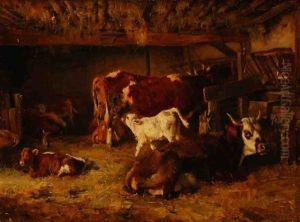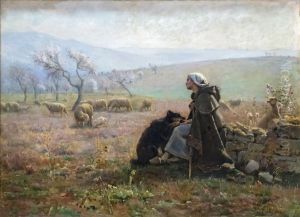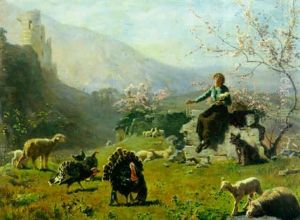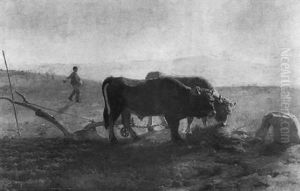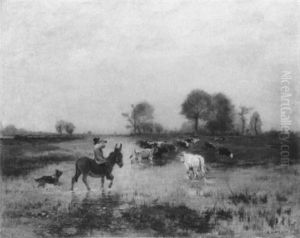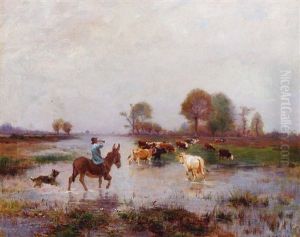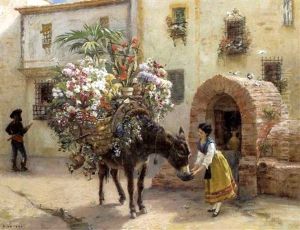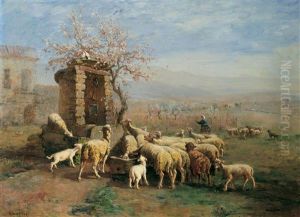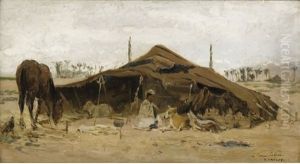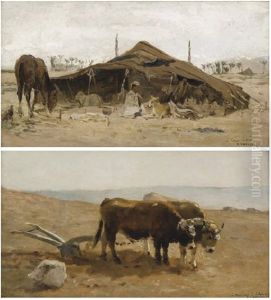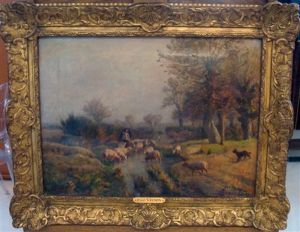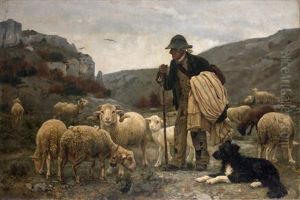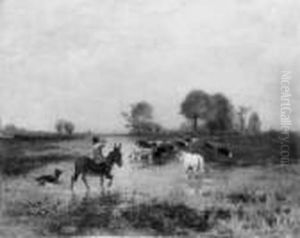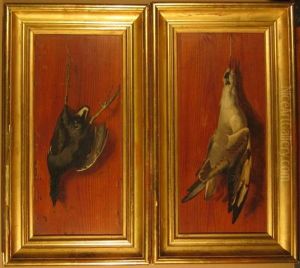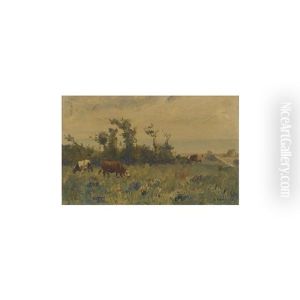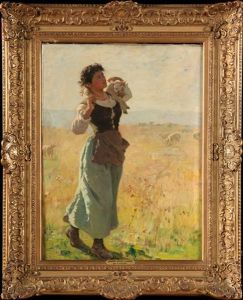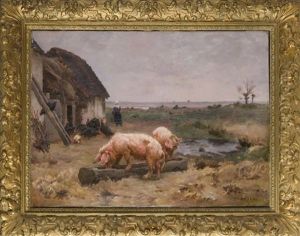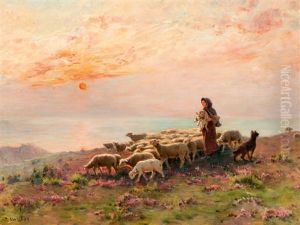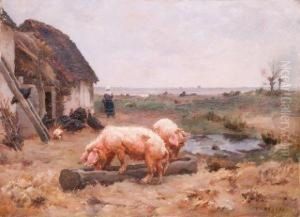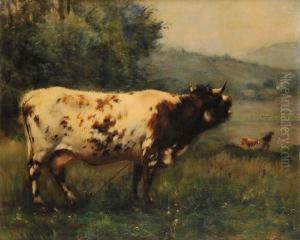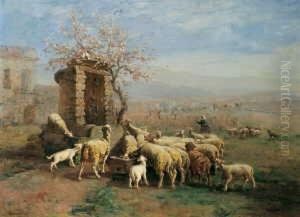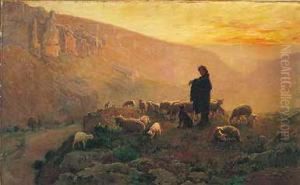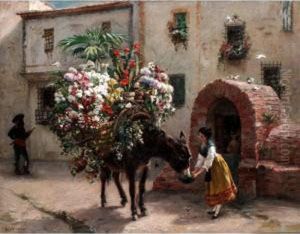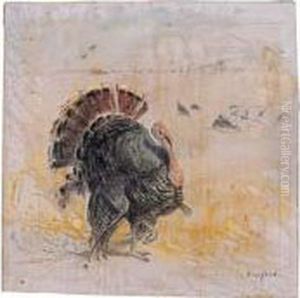Paul Vayson Paintings
Paul Vayson was a French artist born in the picturesque region of Provence, in 1842. His life and career were deeply rooted in the artistic movements of the 19th century, particularly within the realms of realism and later, impressionism. Vayson's work is characterized by its attention to detail, vibrant use of color, and a deep appreciation for the natural landscape, themes that were heavily influenced by his upbringing in the south of France. His oeuvre includes a variety of subjects, from pastoral scenes and rural landscapes to more intimate portraits and still lifes, showcasing his versatility as an artist.
Vayson pursued his artistic training at the École des Beaux-Arts in Paris, where he was exposed to the works of the leading artists of the time. This exposure not only honed his technical skills but also enriched his artistic vision, allowing him to develop a distinctive style that combined traditional techniques with a modern sensibility. Despite the dominance of academic art in France during his formative years, Vayson was drawn to the emerging impressionist movement, which sought to capture the transient effects of light and color. While he never fully embraced the impressionist style, its influence is evident in the luminosity and vitality of his landscapes.
Throughout his career, Paul Vayson exhibited his work at numerous salons and exhibitions, gaining recognition and accolades for his contributions to French art. His paintings were celebrated for their poetic beauty and their ability to evoke the essence of the Provençal landscape and its inhabitants. Vayson's art reflects a deep connection to his native region, a theme that remained central to his work throughout his life.
Paul Vayson passed away in 1911, leaving behind a legacy that has continued to captivate art enthusiasts and collectors. His paintings are held in various public and private collections, serving as a testament to his skill and vision as an artist. Vayson's work not only contributes to our understanding of 19th-century French art but also offers a window into the enduring charm of Provence, its landscapes, and its way of life. His ability to blend realism with a sense of immediacy and atmospheric mood marks him as a significant figure in the transition towards modern artistic expressions.
